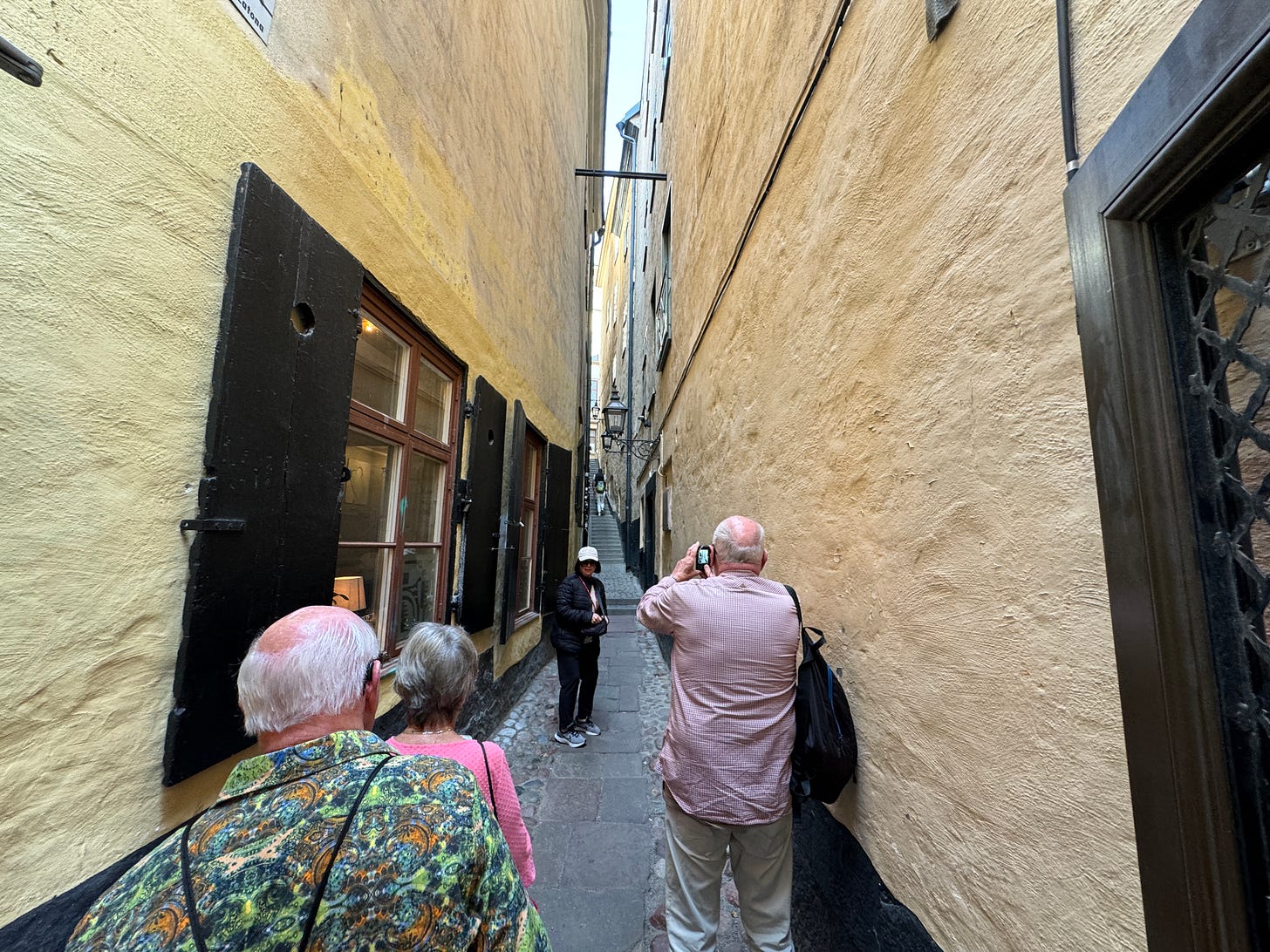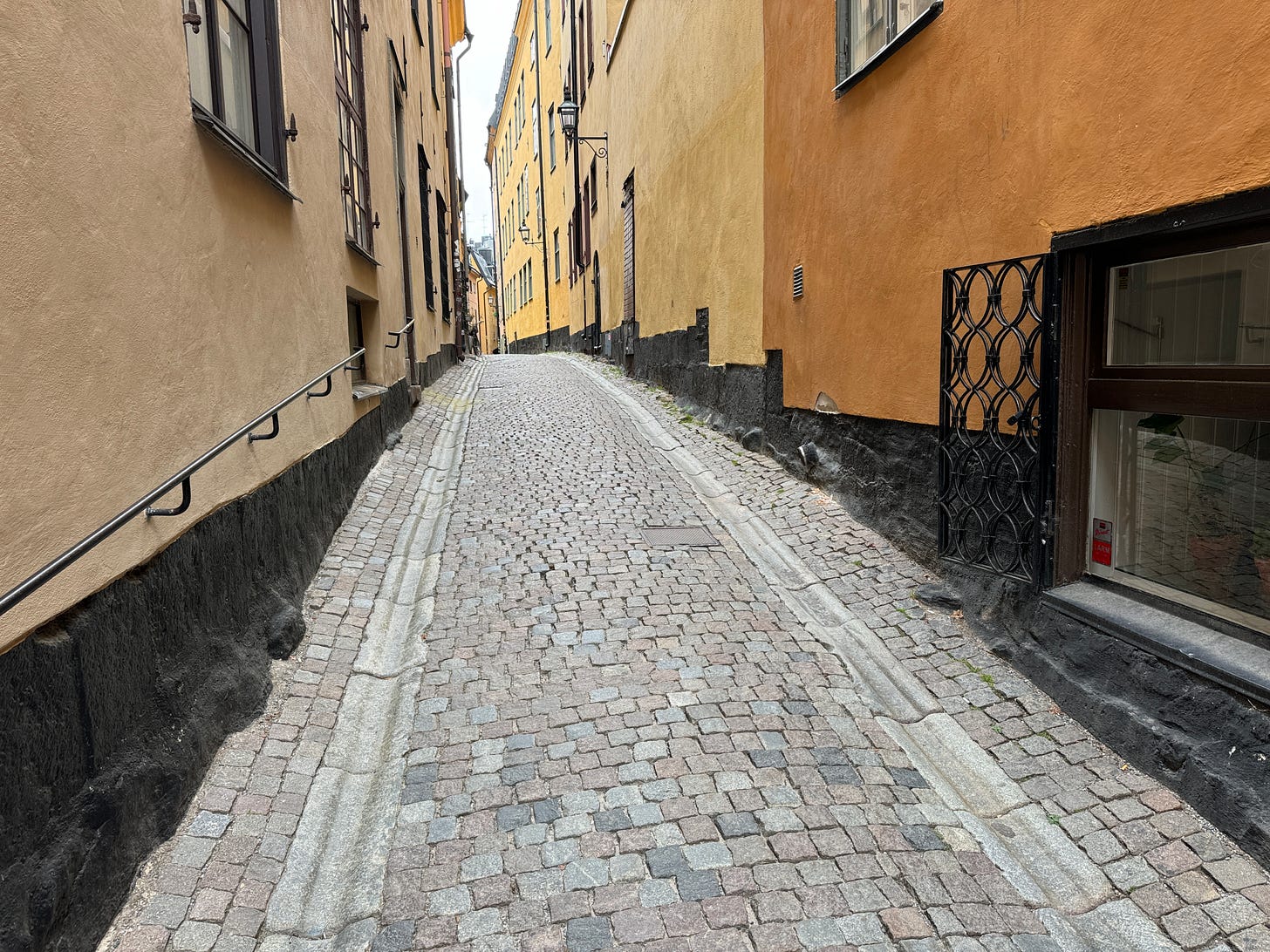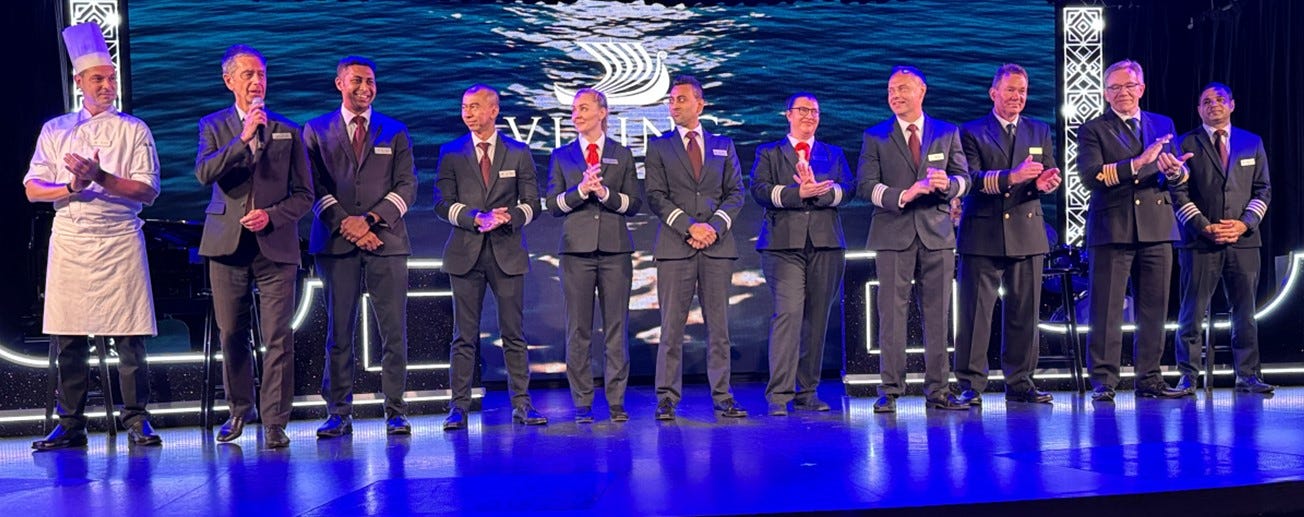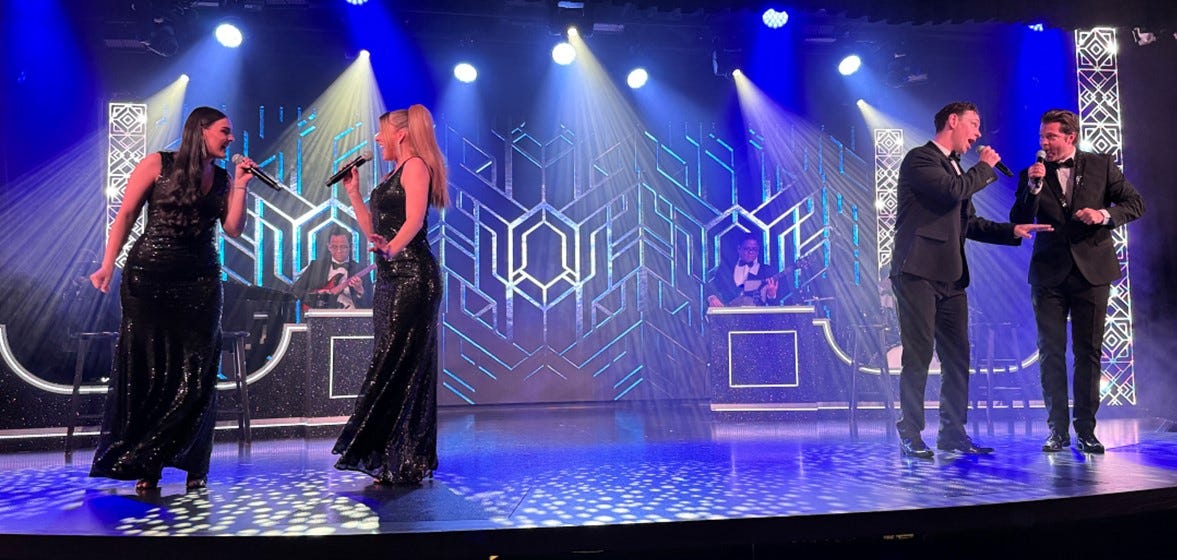Our Last Day in Stockholm - A Walking Tour of Gamla Stan (Old City)
After a good night's sleep on our stateroom's great bed (waking at 9:15), we enjoyed a leisurely breakfast before disembarking at 12:45 for our walking tour.
We weren’t really fond of our tour guide, who stopped and talked so much that we covered very little ground, but we enjoyed getting to see the marching band for the changing of the guard.
We were glad that our new friends, Jan and Monte Mills, were in the same group, and after the walking tour we four stayed in Gamla Stan and had lunch together in a restaurant. Here are pictures of them and us, along with our wonderful waitress Frieda (sp?), who was born and lives in Stockholm.
Here are some still photos from Gamla Stan, which is a cobblestone, narrow-street, car-free zone, except on the periphery, where the bus dropped us off. This first picture is of the palace where the changing of the guard was going on:
In the next picture, Rita poses at a shop bearing her name. English is everywhere on shop names, chalkboard menus, and signs. In Swedish schools, English is taught beginning in the 3rd grade, so you don’t need to know Swedish almost anywhere in Sweden.
Below is Gamla Stan’s narrowest street, which is barely wide enough for a fat American to pass toward the end.
The benches at the south end of Gamla Stan seem designed for sunbathing, not sitting.
A rare street with no tourists - because there are no shops….
Carved stones are next to most buildings for moving rain toward the street.
Our guide, Helena, is at left, carrying the red “lollipop” sign given to all Viking guides.
Back on the ship, I took a couple videos from our veranda that you may find interesting:
I’m guessing it’s a hotel — don’t know.
After a light dinner in the World Cafe, we watched the port talk about tomorrow’s port, Mariehamn (which is pronounced as a 5-syllable name). It is part of Finland, although more people speak Swedish and English there than Finnish. Did you know that Sweden at its height (as “Scandinavia”) encompassed all of Norway and Finland, the Baltic states of Latvia, Lithuania and Estonia, as well as northern Poland and part of Germany and Denmark — even the European part of Russia? It is a fraction of its former self.
Unlike Sweden, Finland’s currency is the Euro. That means that things will be more expensive rather than less expensive, because the Euro is strong against the dollar, whereas the Swedish Krona is weak. We hardly pay attention to such matters on this trip and our earlier world cruise, because nowadays one doesn’t bother with local currency. Even the smallest purchase is made with a credit card, and we give US dollars for tips.
This evening, after beginning this blog post (and sending in my real estate column to the Denver Post by 8 p.m.) we attended a “Viking Welcome Reception” in the Star Theater, where cruise director Bruce…
…introduced the captain (just back from vacation for this cruise), who then introduced the heads of all the departments. Here’s a picture, with the captain second from right:
Next, Bruce had the three lecturers for our cruise introduce themselves. Left to right: Flint Whitlock of Denver (!), an expert on World War II history; Martin P. Lee of England, who will give destination lectures focused on geography, geology, and history; and Dr. Bryan Babcock, our “Viking Resident Historian.”
Lastly, Bruce introduced the Viking Vocalists who sang a couple songs, backed by the Viking Sky band, which he also introduced.
Tonight, we turn our clocks forward one hour, since Finland is in the Eastern European time zone. Tomorrow or the following night we reverse that, as we head west for our first and only sea day, heading toward Gdansk, Poland.
I’ll close with a video of the vocalists performing a song together:
Good night!


















